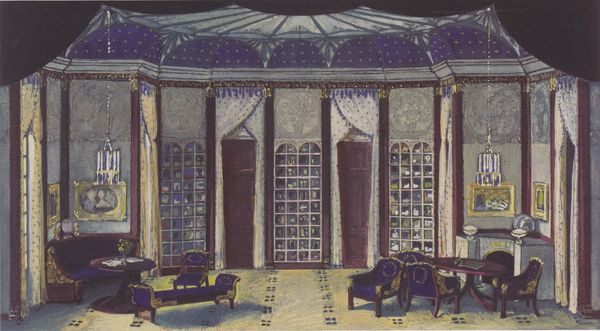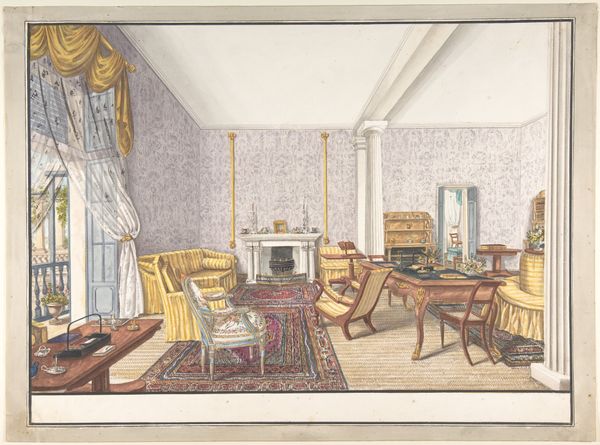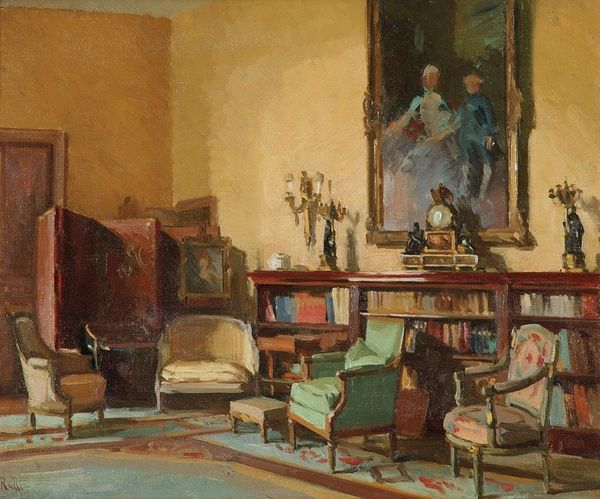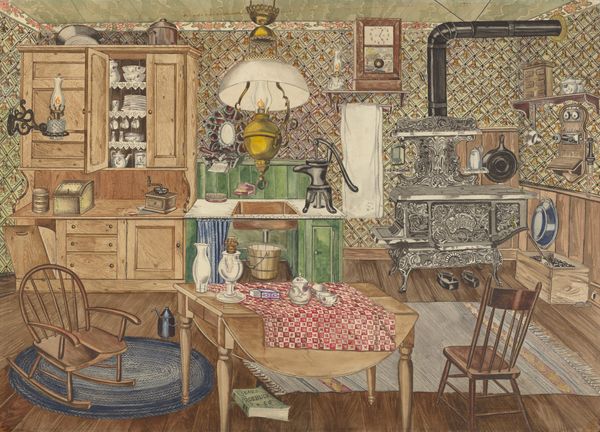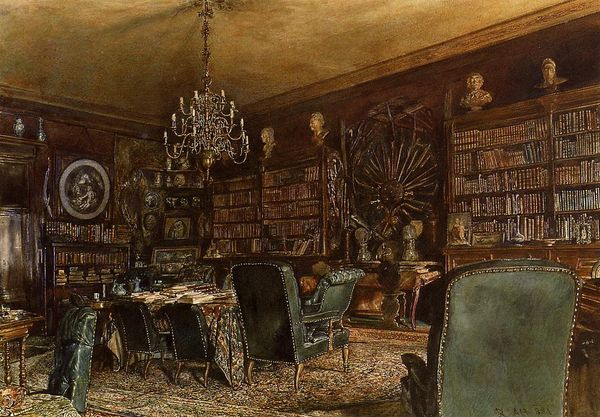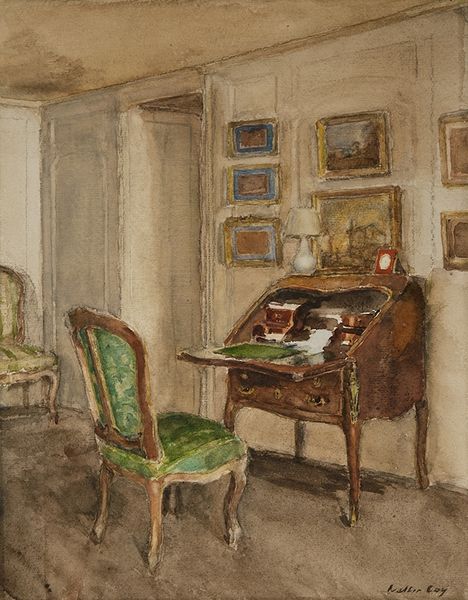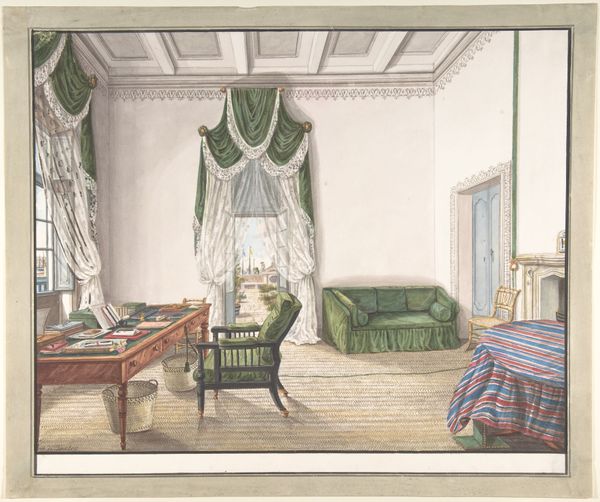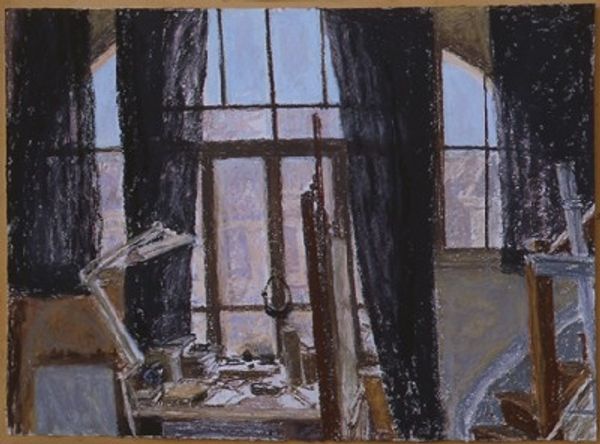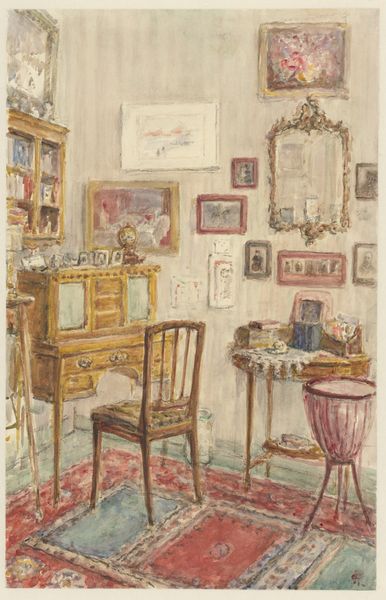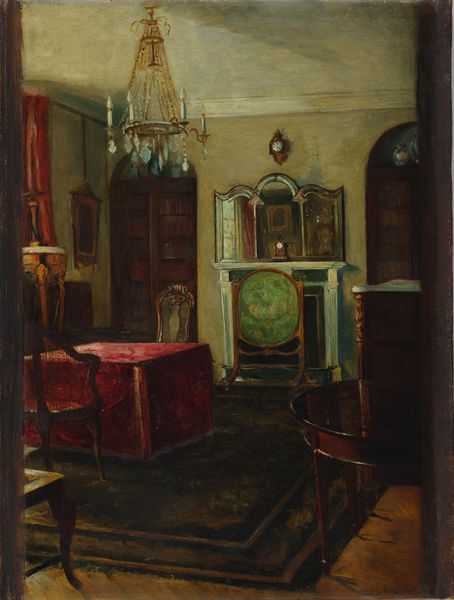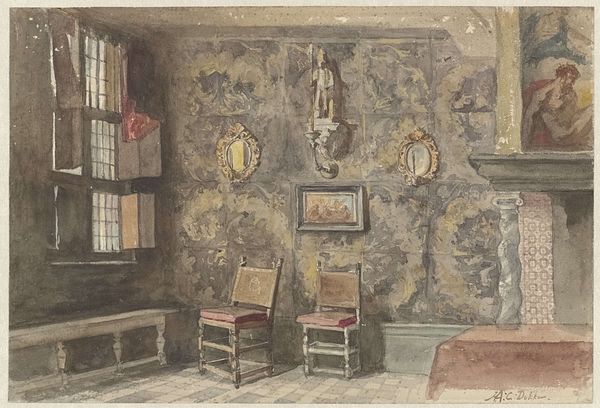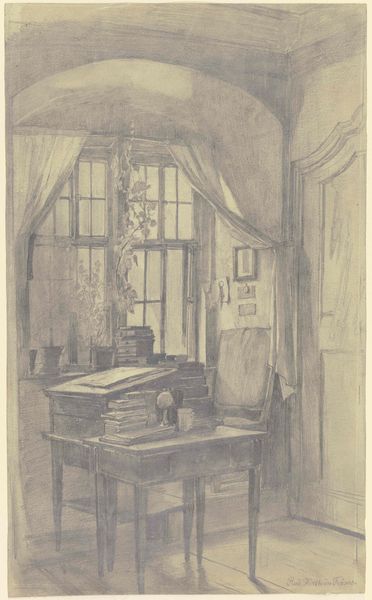
drawing, paper, watercolor, mural
#
drawing
#
art-nouveau
#
paper
#
watercolor
#
symbolism
#
watercolour illustration
#
mural
#
watercolor
#
historical building
#
building
Dimensions: 32.3 x 43.8 cm
Copyright: Public domain
Editor: Here we have Koloman Moser's "Stage design for 'The Phantom' of Hermann Bahr," a watercolor and drawing on paper created in 1913. It's rather charming, almost dreamlike, but also feels… static, doesn't it? A very formal, theatrical room. What leaps out at you when you look at this, like what does it say about what it wants to capture or depict? Curator: You know, static is a good word. I find my eye darting around, searching for a focal point that just isn’t there. And perhaps that's the point? The design is meticulously balanced, symmetrical almost to a fault. The three doors and implied archways create a rhythm, but is it a comforting rhythm, or a slightly unsettling one? It reminds me a bit of a Wes Anderson film set, all precision and controlled chaos. This space feels pregnant with potential narratives but refuses to tell a single story, doesn’t it? What do you think about its symbolic element of architecture? Editor: That makes total sense, Wes Anderson totally nailed that symmetrical feel, for sure! The architecture feels very controlled but with slight hints of… something ancient? Perhaps a past that we don't have the full image to! So would that fit within Art Nouveau or Symbolism elements in this piece? I also notice the building looks modern but yet aged. Curator: Exactly! The ghost of classicism haunts it. The building has got those flourishes with old building silhouettes with its old elements of modern infrastructure in art! To me, the Art Nouveau elements are a lens for this dreamlike stage of theater. It embraces ornament, it loves patterns, it tries to draw the eye. So what are our perspectives? Is it capturing an essence of space rather than mimicking reality? The point may not be to show us a real room but rather an emotion about being indoors, in a very intellectual place. Editor: Very nice explanation. It changed my perspective quite a bit and, for example, never realized the symbolic element. Thank you. Curator: And thank you! Now, every time I look at it, I can envision the narrative possibilities bursting forth.
Comments
No comments
Be the first to comment and join the conversation on the ultimate creative platform.
